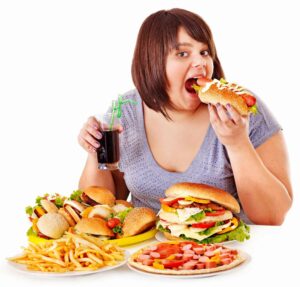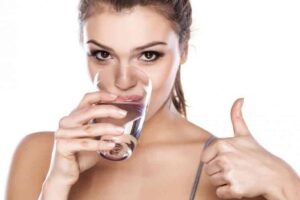I’m going to disappoint you – this is not a guide to proper drinking, as much as it looks like one.
Alcohols are organic compounds containing one or more hydroxyl groups.
However, knowing this is unlikely to change our appetite for alcohol.
I write “alcohols” because there are different types, and certainly by “types” I do not mean “vodka”, “whisky”, “brandy”, “wine” and so on. We are talking about ethanol, methanol, cyclohexanol…
But we don’t need to know that either.
We’re going to talk about alcohol, which is becoming somewhat drinkable. About ethanol. The others are downright poisonous or give you a headache.

The word alcohol comes from the Arabic “al-kohol”. meaning “the spirit of wine”. But we won’t just talk about wine. In the colloquial language, “alcohol” refers to alcoholic beverages that contain varying amounts of ethyl alcohol or ethanol.
Well, I will mention some chemical complications anyway…

Ethanol consists of carbon, hydrogen and oxygen with the chemical formula C2-H5-OH. (Easily remembered by the expression “Tap two, ha five more, ohhhh….”).
For the purposes of the alcohol industry, it is obtained through a complex fermentation process from fruits and grains, in which our grandfathers are the most dedicated, and for the consequences of the process, also our grandmothers.

Harder drinkers make alcohol out of anything they can find, adding sugar to it and letting it ferment.
But regardless of how it was extracted, we can safely say that ethanol is a carbohydrate, but not with 4, but with as many as 7 calories per gram. This means that 50 grams of concentrate with 40% alcohol content loads us with 140 extra calories. With so many loads and a glass of wine. Some cocktails “bombard” us with 500 or more calories, sometimes much more than a standard lunch.
We usually teach our customers not to count calories, but for alcohol, this prohibition is lifted! Count all the calories in every gram of alcohol! Mandatory!
But the problem with alcohol is not only in excess calories, but also in the way they affect the body. And not only as dizziness and loss of balance.
Alcohol affects a person’s metabolism. I’ve also seen a drunken duck gorged on “drunken cherries”, but its metabolism is none of our business now.
Absorption of ethanol occurs mainly in the stomach and small intestine, and then the blood circulation carries it to almost all organs of the body. It has the greatest impact on the central nervous system, as it quickly and unobstructedly crosses the blood-brain barrier. Through the nervous system, it exhibits a strong suppressive effect on a number of important processes. It also destroys a lot of nerve cells (and don’t worry at all that it doesn’t hook the calm ones!).
Ethanol is processed by the liver at an average rate of about 15 grams per hour, which slows down and hinders the normal course of liver functions. I.e. further slows down metabolism and recovery processes. For this reason, it is very important to avoid it after training. Including beer!

Ethanol is initially broken down into acetaldehyde, which is a highly poisonous substance. It breaks protein bonds – generates a reactive form of oxygen, which damages proteins in the liver. If too many proteins are damaged in the liver, cirrhosis is formed. The body tries to “decompose” the acetaldehyde to the relatively harmless acetate, but it doesn’t help all that much. Especially after prolonged use, at some point it can’t stand and…
How quickly the conversion of ethanol through acetaldehyde to acetate will take place depends on the amount of alcohol consumed and the individual characteristics of each organism. It also depends on the speed of alcohol entering the liver. Part of it is retained in the bloodstream and accumulates in the liver unprocessed. Its accumulation also depends on the food taken before and during alcohol consumption. It can be said. that almost any food slows the absorption of ethanol into the bloodstream. the appetizer-alcohol combination turns out to be worse for your figure than either consumed separately.
The resulting acetate enters the mitochondria of the liver cells to produce energy and largely displaces fat as an energy source, colloquially “stops burning it.”
According to scientific research, two small vodkas suppress the processes of fat breakdown by 73% in a few hours. The situation worsens even more if we add a decent appetizer to the vodkas, as usually happens in Bulgaria. Then the calories become much more than we can absorb at once and the excess accumulates in the fat depots in the form of fat.
As an added “extra”, alcohol usually increases appetite, which further increases caloric intake.

It’s like I’m starting to hear you thinking: “Starting tomorrow, I’m stopping all kinds of snacks!”. Strange why I don’t hear anything about stopping alcohol…
But her work does not stop here. The ethanol metabolic pathway continues with the production of a lot of citrate (citric acid). Citrate can be called the connecting link in the metabolism of alcohol and fructose, because in this process and from large amounts are produced.
And we’ve all read from the pictures on Facebook (who else reads anything anyway?) that fructose also puts a lot of strain on the liver.
Combining alcohol with fructose is extremely bad. but unfortunately a very popular combination.
This is not even about a glass of wine with a slice of apple in it or a sweet soft drink for a diluent (I see in your eyes a promise to drink only water as a diluent, which is a small step towards giving up alcohol, and I smile with satisfaction).
This is about mixing alcohol with the ubiquitous energy drinks with glucose-fructose syrup (or sugar, which is basically what it is) – something I see everywhere on a daily basis.
So, the first main conclusion we make is that if we care about our health, we should not combine alcohol with anything that burdens the liver, such as fructose, drugs and especially steroids!
So let’s be careful what we drink in the gyms. Not everything is as harmless as fitness instructors convince us, if they are even certified as such. No offense, but where there’s a lot of muscle I’ve noticed that a lot of brain doesn’t thrive. But there are always exceptions… I know extremely capable and erudite fitness instructors.
Therefore – clean water with alcohol. And best of all – instead of alcohol. And without steroids and unproven protein shakes!

And if we care about our figure, let’s not add caloric appetizers, but to bet on more salads and clean sources of protein.
Salads will fill us up without excess calories, which will curb the increased appetite. They will also slow down the absorption of ethanol.
And proteins will compensate for protein synthesis disorders caused by ethanol.
Alcohol also has a strong dehydrating effect. Which in turn means more water. Almost all chemical and physiological processes need a water environment, let’s not deprive them of it.
And finally, back to citric acid. When the body has an excess of it, it fails to use it for energy production. So the fat will not be used at all. It will also disrupt the basic-acidic balance in our body.
If we often look at ourselves in the mirrors of the gym, even if we do sports there, it is very difficult for us to use this huge amount of excess energy. The liver begins to produce triglycerides and cholesterol, which are dangerous for it and which it tries to get rid of.
Well, yes, but somewhere, it throws them into the circulatory system. With all the negative consequences on it – clogging, causing atherosclerosis, blocking the valves and any number of other negative effects and diseases.
In one sentence – if we care about our own body, the only thing that can be said to be ours for sure – let’s replace alcohol with pure water!

The mood will come from the pleasant people who surround us.
If they are not like that – change them!



